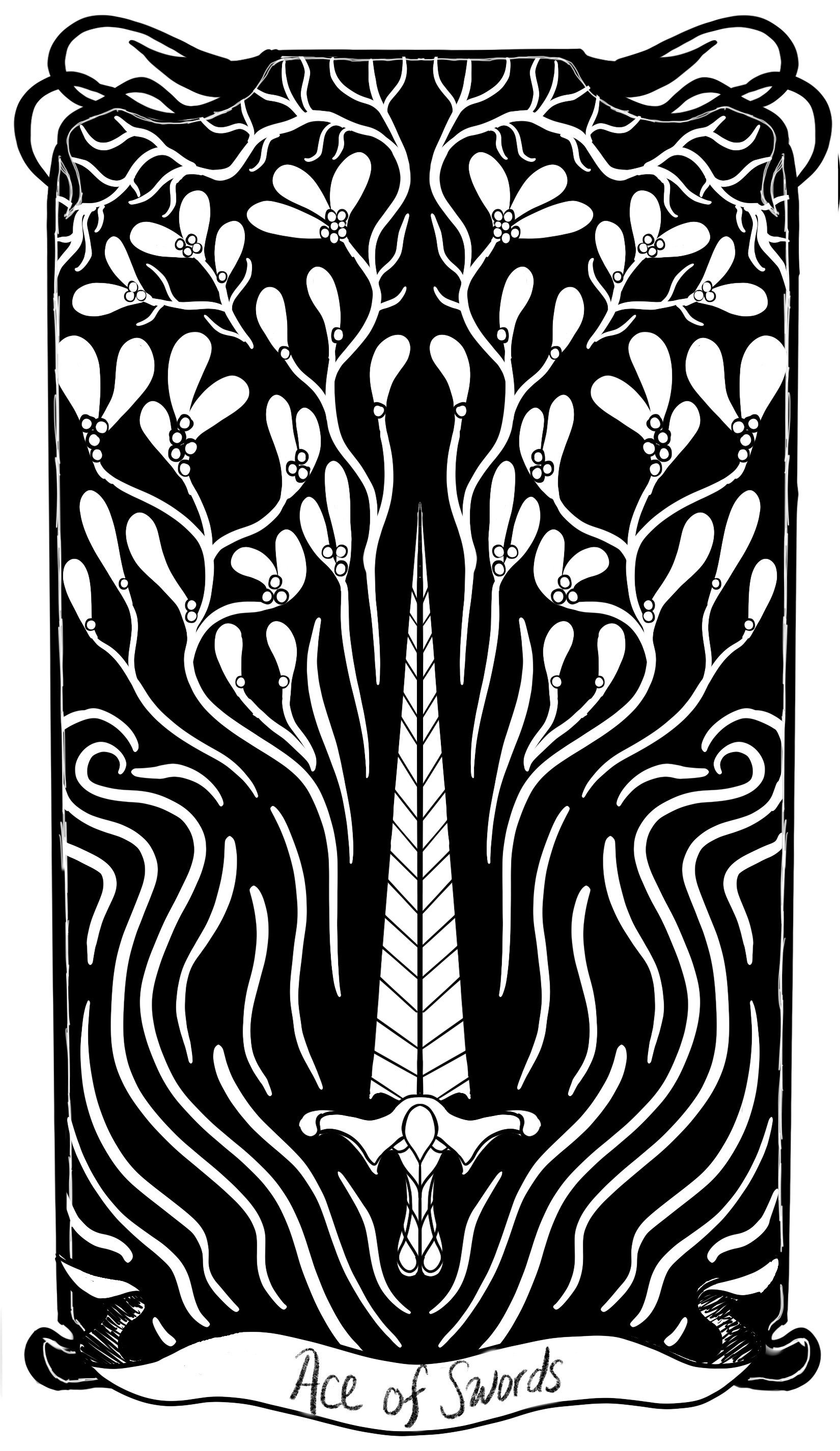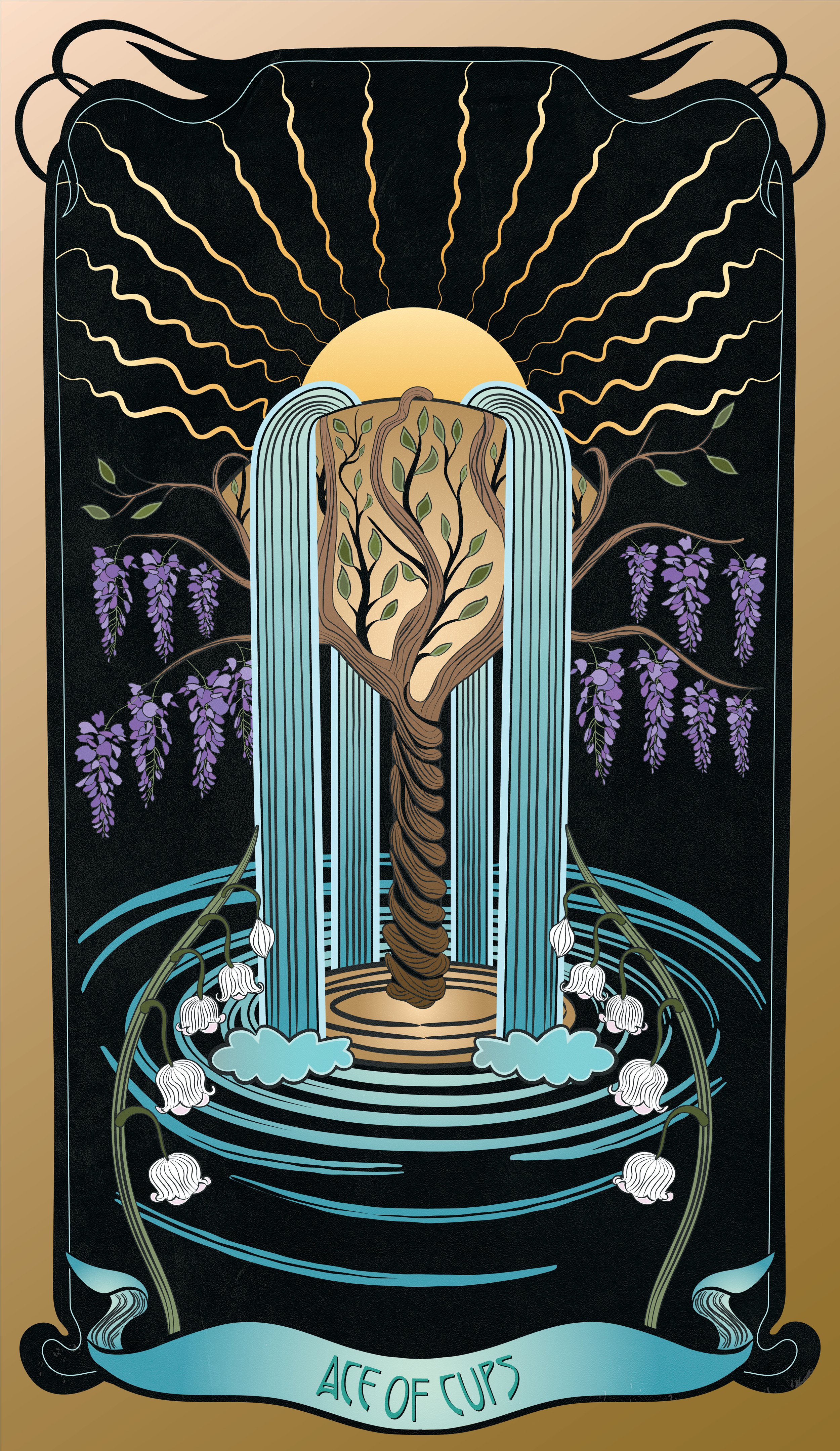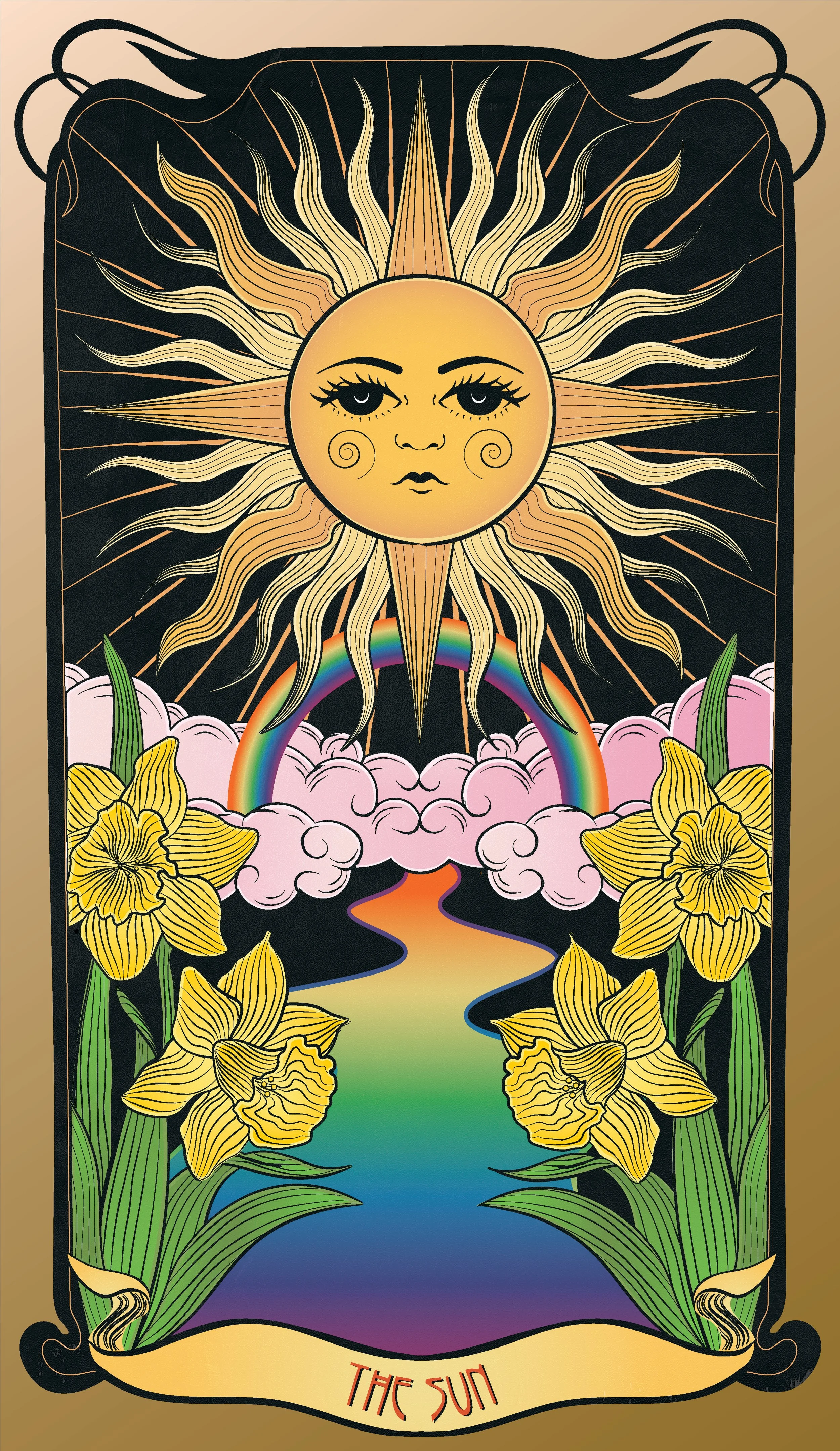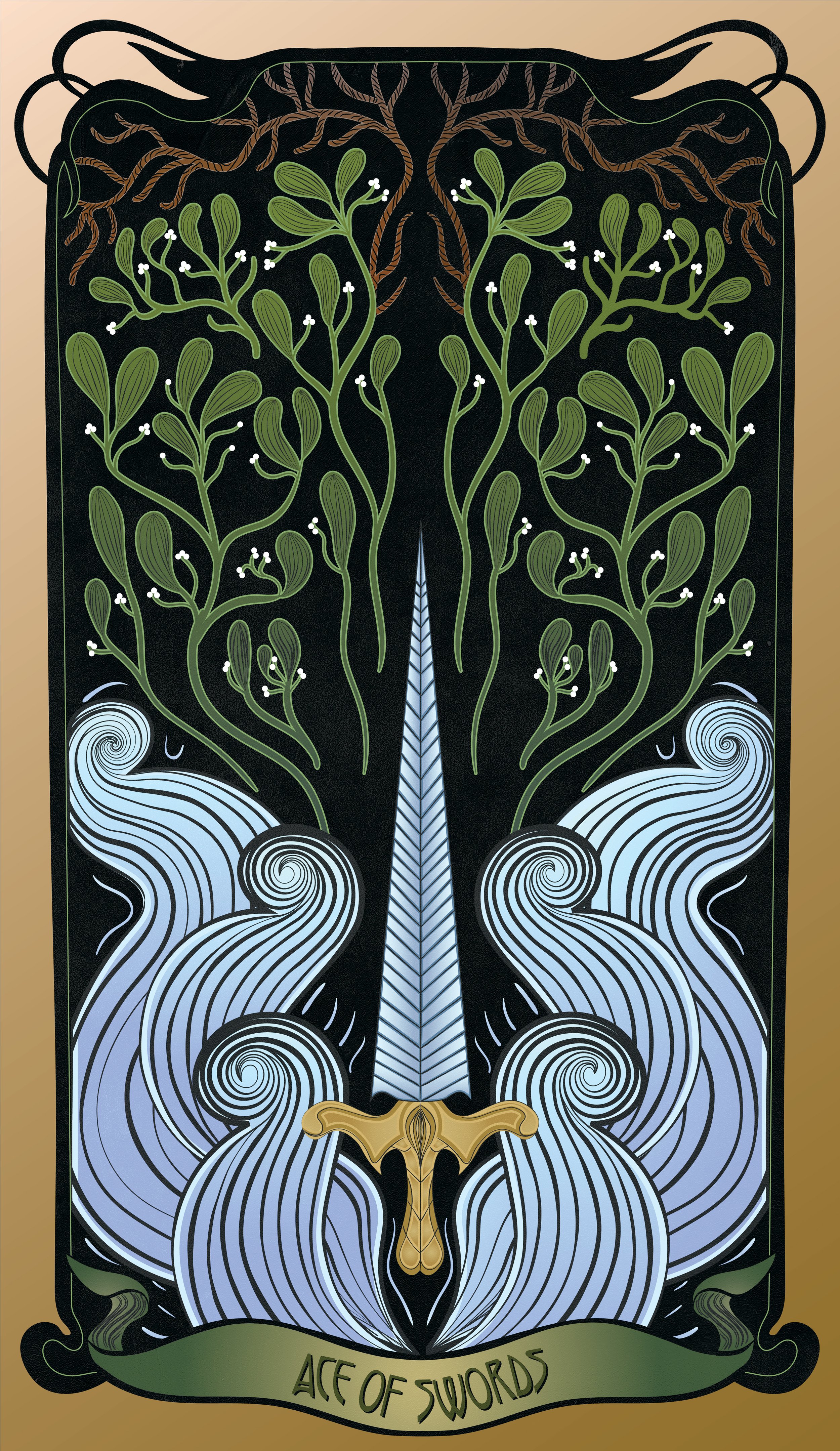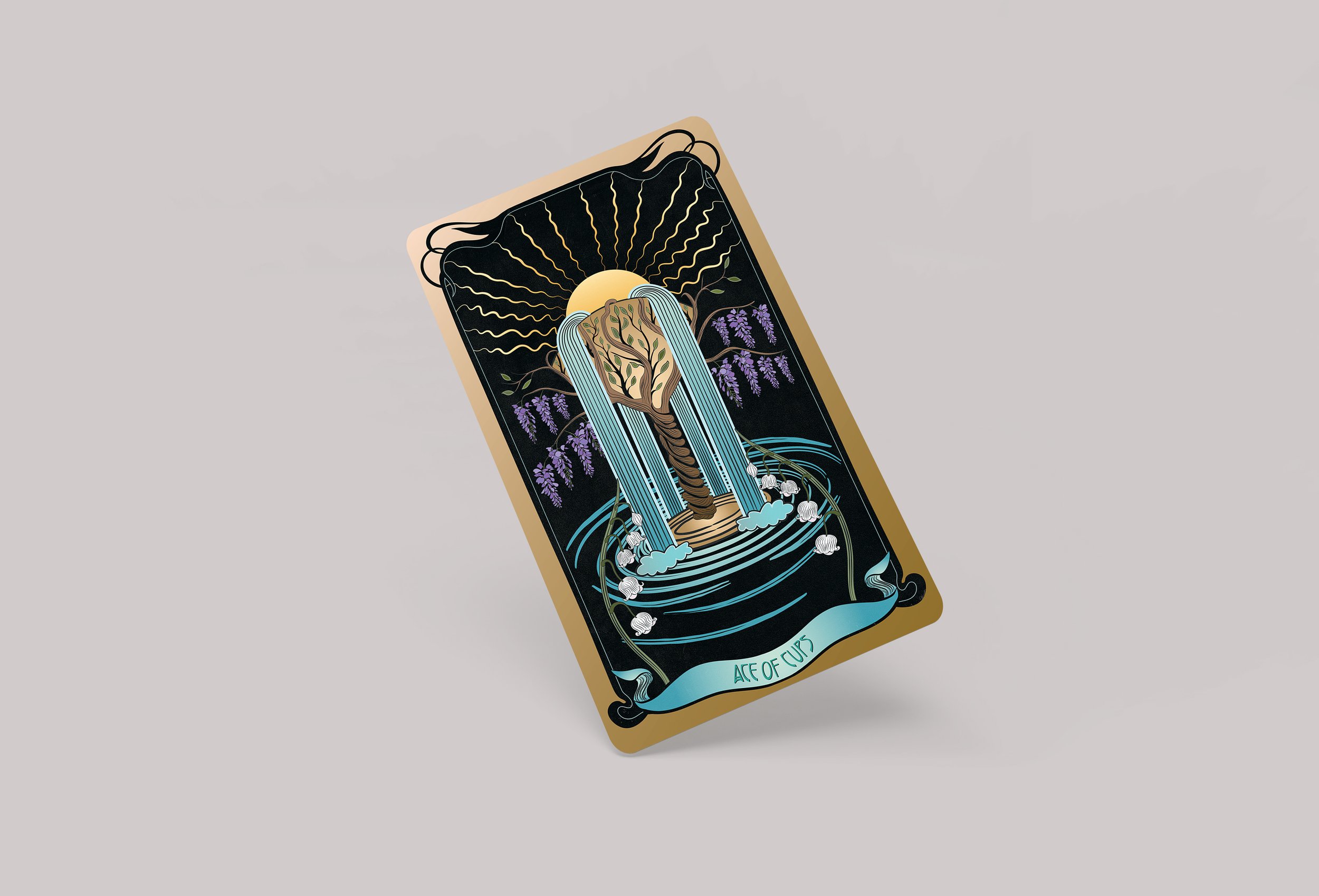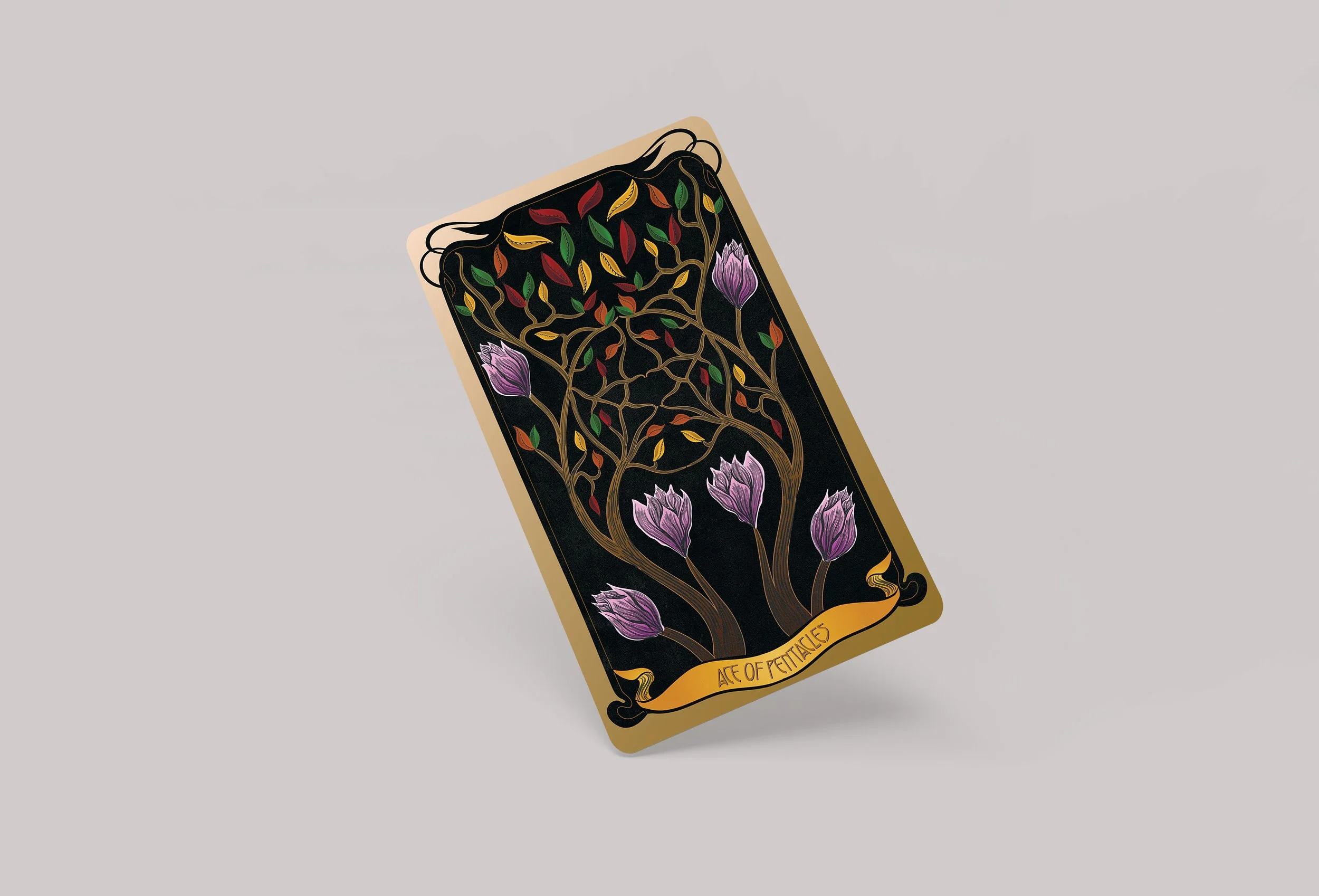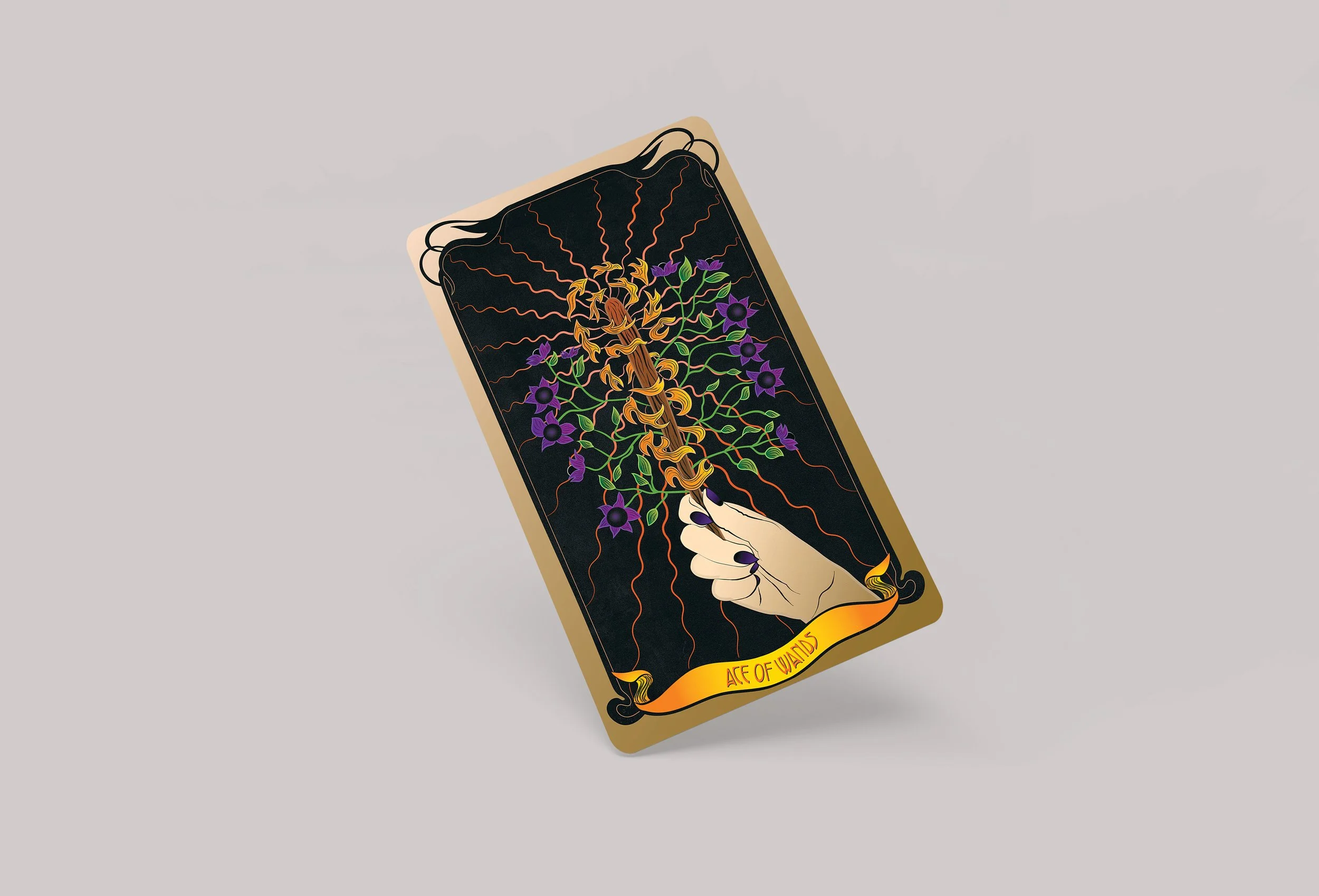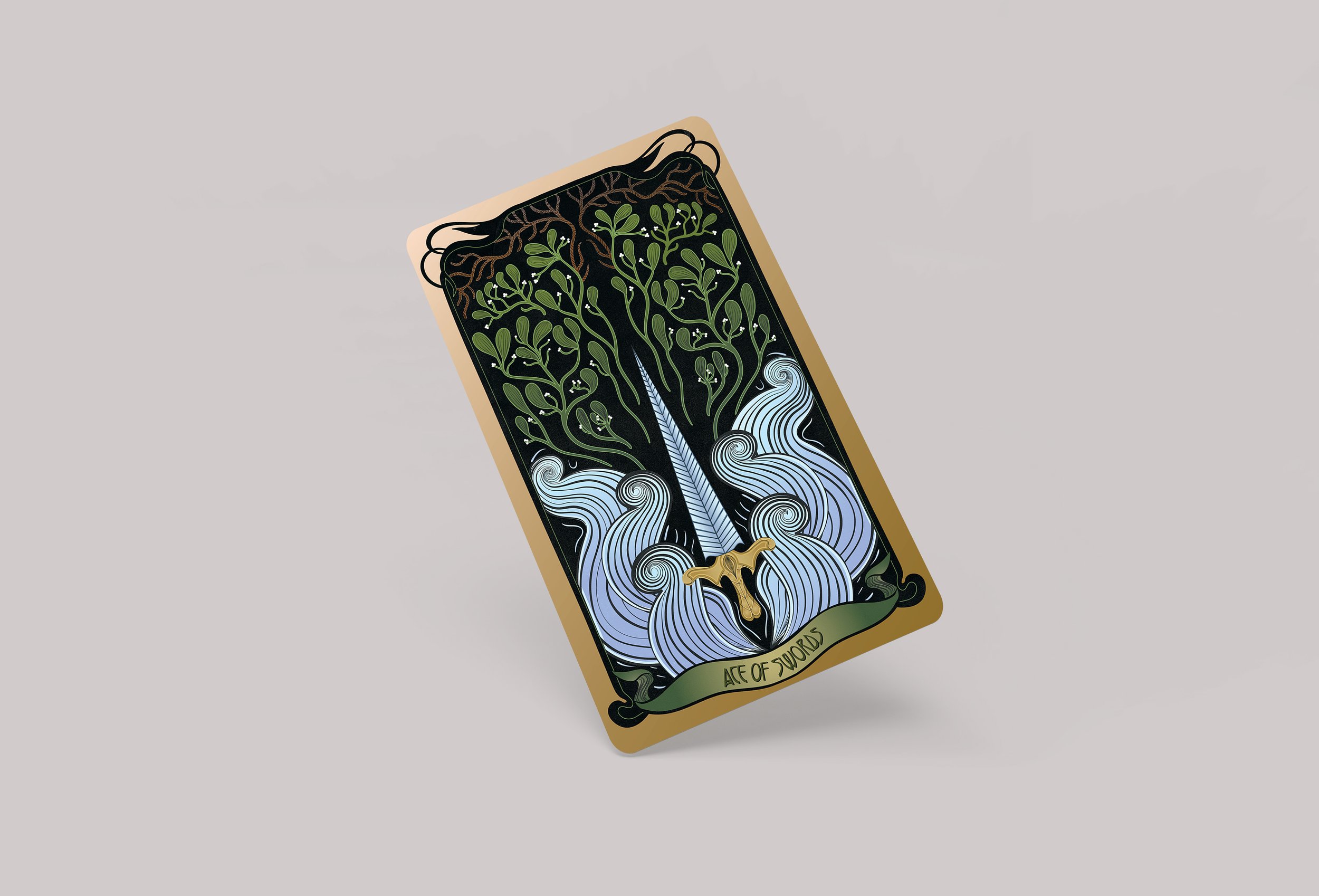poison path tarot cards
The Poison Path Tarot Deck is a tarot deck that features poisonous plants. These illustrations contain stylistic choices that are heavily influenced by art nouveau, fused with a linocut technique-inspired style. These tarot cards also won a Platinum Graphis Award in the New Talent Annual 2022, and got published in the archive & book for 2022. This project has turned into a lifelong passion project to design a whole 78 card tarot deck.
What do the cards mean?
-
The Ace of Cups is one of the most positive and auspicious cards in the Tarot deck, representing new beginnings, emotional fulfillment, and spiritual blessings. The Ace of Cups depicts a chalice or cup overflowing with water, which symbolizes the abundance of love, compassion, and joy that is available to the querent.
The Ace of Cups is often associated with two plants: wisteria trees and lilies of the valley. Wisteria trees are known for their delicate, fragrant flowers that bloom in the spring, symbolizing new life and rebirth. In Japanese folklore, wisteria trees are also associated with romance and sensuality, and are often depicted in art and literature as a symbol of love.
Lilies of the valley, on the other hand, are a symbol of purity, humility, and innocence. These delicate white flowers are often used in bridal bouquets and represent the beginning of a new life, purity of heart, and the promise of happiness.
When combined with the meaning of the Ace of Cups, wisteria trees and lilies of the valley further emphasize the card's themes of new beginnings, purity, and love. The overflowing cup represents the abundance of emotional fulfillment and spiritual blessings that are available to the querent, while the wisteria trees and lilies of the valley symbolize the beauty, purity, and innocence of these new beginnings.
-
The Ace of Wands is a tarot card that represents new beginnings, creativity, inspiration, and growth. It is often associated with the element of fire, which symbolizes passion, energy, and drive. In tarot readings, the Ace of Wands can indicate that you are being given a new opportunity or idea that has the potential to lead to success, as long as you have the courage and determination to pursue it.
Belladonna is a poisonous plant that has been associated with witchcraft and magic for centuries. Its name means "beautiful lady" in Italian, and it was believed to have been used by witches to enhance their beauty and increase their powers. However, the plant is also extremely toxic and can cause hallucinations, delirium, and even death.
The Ace of Wands is depicted with a sprig of belladonna, which may represent the potential dangers and risks involved in pursuing new ideas and creative endeavors. The belladonna may also symbolize the need for caution and careful planning, as well as the importance of balancing passion and enthusiasm with practicality and common sense.
-
The Ace of Pentacles is a tarot card that represents new beginnings and opportunities in the material world, such as in finances, career, and health. It is a symbol of abundance, prosperity, and manifestation.
The autumn crocus, also known as Colchicum autumnale, is a flower that has been associated with this tarot card. According to folklore, the autumn crocus is a poisonous plant that blooms in the fall, which is a time of harvest and abundance. The plant's poisonous nature is said to represent the dual nature of material wealth, which can either be a blessing or a curse depending on how it is used.
The autumn crocus can be seen as a metaphor for the potential dangers and pitfalls of material wealth. The card reminds us to be mindful of our relationship with money and to use it in a way that promotes abundance and prosperity for ourselves and others. It encourages us to seek out new opportunities and to be open to the abundance that life has to offer.
-
The Ace of Swords in Tarot represents the raw power of the intellect, truth, and mental clarity. It is a symbol of triumph, victory, and the start of new ideas and ways of thinking. The sword is a representation of a double-edged sword, with one edge pointing upwards towards the heavens and the other pointing down towards the earth. This duality signifies that the Ace of Swords represents the balance between the material and spiritual worlds, and that the truth lies at the intersection of both.
Mistletoe was considered a sacred plant by many ancient cultures, including the Celts, Norse, and Druids. It was believed to have magical properties and was used in various ceremonies and rituals. In Norse mythology, mistletoe was used to kill the god Balder, but it was also used to bring him back to life. This duality of life and death is also reflected in the Ace of Swords, which can bring clarity and understanding but can also cut through illusions and reveal harsh truths.
The connection between mistletoe and the Ace of Swords lies in their shared symbolism of duality and power. Mistletoe was a symbol of life and death, and the Ace of Swords is a symbol of both victory and loss. Both mistletoe and the Ace of Swords represent the power of the mind and the ability to cut through falsehoods and see the truth. Ultimately, the Ace of Swords encourages us to be honest with ourselves and to seek out the truth, no matter how difficult it may be to face.





